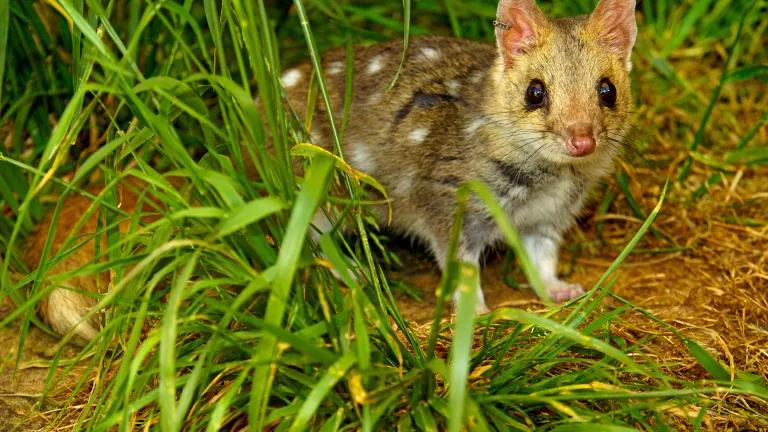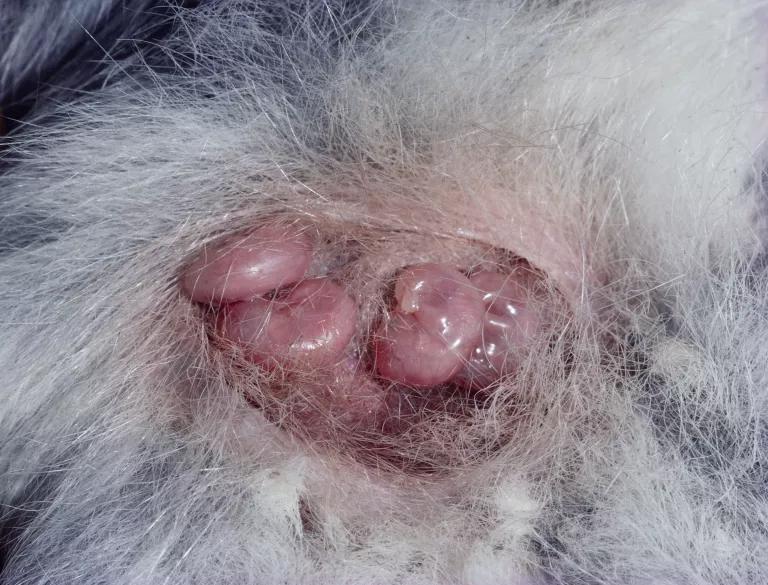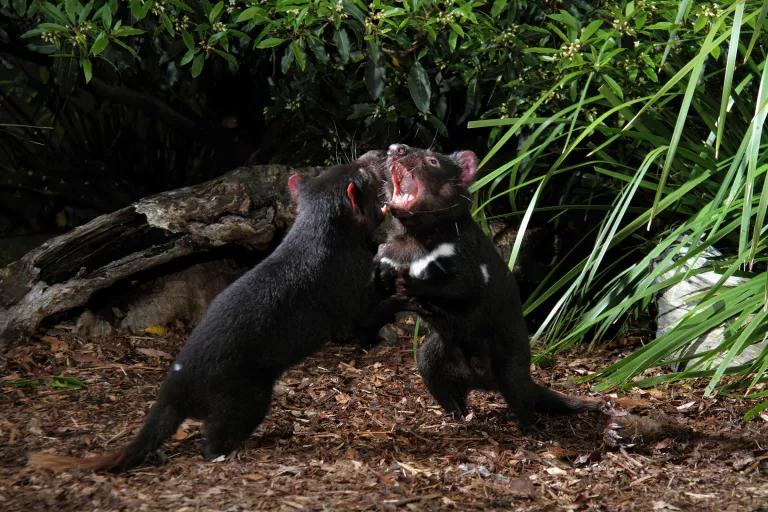Can Australia Be Re-wilded? Let’s Ask the Quolls
These cute little marsupials are taking their country back—well, hopefully.

An eastern quoll
Just south of Sydney, 20 endangered eastern quolls, each wearing a radio collar, scampered out of animal carriers and into Booderee National Park this March. These ferret-faced marsupials, almost the size of small house cats, were the first of their species to step foot in the Australian wild since the early 1960s, when habitat destruction, disease, and an onslaught of invasive carnivores wiped them out on the mainland. Scientists and conservationists were eager to see how these quolls, raised in captivity in nearby Tasmania, would fare.
It’s been a tough four months.
“A week into our tracking program, we had a mortality signal go off on one of our collars,” says Rob Brewster, director of Rewilding Australia, a not-for-profit organization dedicated to the restoration of Australian ecosystems. After narrowing the search to a single large rock, Brewster leaned down and saw the distinctive pattern of a diamond python—a diamond python with a very large bulge in its belly.
Alas, this would not be the only eastern quoll to shuffle off this mortal coil. Of the 20 transplants, 14 have now perished. Predators killed half of them—invasive foxes got three, a dog one, native diamond pythons another two, and one death was clearly predator inflicted, but by what, the researchers could not tell. Automobiles killed another four. The causes of death for the other three quolls could not be determined.
“Even the most battle-hardened ecologist will tell you that they form strong attachments with the animals they work to protect,” says Brewster. “So losing animals, particularly to something as senseless as getting hit by cars, is felt acutely by the team.
But where there is death, there is also life. Of the six surviving marsupials, three are now mothers.

Pouch checks last month confirmed that each of these adorable quolls was carrying five little jellybeans, which means there could be as many as 15 new pioneers in the mix come spring. Of course, given the fates of the first batch of quolls and the typical toll that life in the wild takes on the young and inexperienced, it’s very unlikely all of these precious pups will survive. But the fact that they exist at all is reason enough to toss your cork hat in the air. After all, no eastern quoll has given birth in Australia in at least 55 years.
You have to remember, the released quolls were bred in captivity, at two Tasmanian wildlife parks, Trowunna Wildlife Sanctuary and Devils@Cradle. To help them acclimate to the wild, the parks’ staff set up feeder stations to supplement their foraging, but in order to prevent dependency, they weaned the animals off the feeders gradually. The quolls had to learn how to hunt, find shelter, and avoid predators on their own.
“People have been discussing reintroducing eastern quolls for over a quarter of a century, and mostly because of a fear of the unknown, it was never attempted,” says Brewster.
Luckily, Booderee National Park sits on a peninsula, so it’s partly protected from marauding foxes and cats. A peninsula is not quite as isolated as an island, of course, but the geography allows the team to set up an invisible wall of predator traps across the neck of the landmass. Clearly, the countermeasures weren’t foolproof, though, since at least one fox was able to catch three of the quolls, but Brewster is optimistic.
Prolonged survival is the first goal of any reintroduction effort, but the fact that the quolls are breeding after just a few months? That’s whipped cream on the pavlova.
And Australia could use some good wildlife news. The continent has the worst rate of mammal extinction on earth, having lost 30 species since the days of European colonization. Brewster thinks this bleak reality has paralyzed conservation efforts in the country. In his opinion, the idea of conserving a “degraded status quo just isn’t inspiring enough to get a very urbanized society out from in front of their TVs and actively engaged in improving [the] environment.” This is why Rewilding Australia wants to do more than conserve. It wants to restore. And eastern quolls are just the beginning.

Reintroducing Tasmanian devils to mainland Australia—where they used to exist, by the way—might be a good strategy for reducing the damage done by foxes and cats; according to Brewster’s models, the devils could disrupt the invasives’ reign of terror. Dingoes are another embattled native species that could help, since they create a landscape of fear that prevents midsize predators from annihilating smaller, endangered natives like quolls, greater bilbies, and burrowing bettongs. Unfortunately, Australia has already constructed the largest fence on earth in order to keep dingoes from the southern half of the continent, allegedly to protect livestock.
For now, though, the eastern quolls must carry the torch. Brewster says the team is eyeing another release, which could come as soon as next March. This time they’ll be doing even more fox control outside the park and shifting where they free the quolls to avoid some of the more heavily trafficked roads.
As for the little pink pups, we’ll have to wait until mid to late spring to see how many make it out of the momma quolls’ pouches, and then how many more will venture out of the dens. But don’t worry—Australia’s spring starts in September, so we won’t have to wait too long. Good luck, mates.
onEarth provides reporting and analysis about environmental science, policy, and culture. All opinions expressed are those of the authors and do not necessarily reflect the policies or positions of NRDC. Learn more or follow us on Facebook and Twitter.
This article was originally published on onEarth, which is no longer in publication. onEarth was founded in 1979 as the Amicus Journal, an independent magazine of thought and opinion on the environment. All opinions expressed are those of the authors and do not necessarily reflect the policies or positions of NRDC. This article is available for online republication by news media outlets or nonprofits under these conditions: The writer(s) must be credited with a byline; you must note prominently that the article was originally published by NRDC.org and link to the original; the article cannot be edited (beyond simple things such grammar); you can’t resell the article in any form or grant republishing rights to other outlets; you can’t republish our material wholesale or automatically—you need to select articles individually; you can’t republish the photos or graphics on our site without specific permission; you should drop us a note to let us know when you’ve used one of our articles.

These 5 Animals Would Be Goners Without the Endangered Species Act
Finally, a High Seas Treaty to Protect the World’s Oceans
Can Anything Be Done to Stop Overfishing?